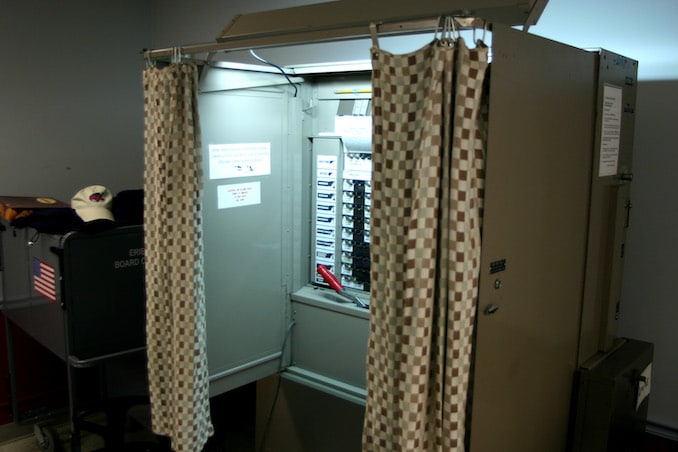New Voter ID study shows ‘a significant negative effect’ on presidential election turnout in Rhode Island
Since Rhode Island passed a Voter ID law in July 2011 there’s been a debate as to whether or not the legislation has hurt voter turnout. Now, with nearly a decade of data, the National Bureau of Economic Research (NBER) has released a new study, “Effects of Photo ID Laws on registration and turnout: Evidence from Rhode Island” that shows
February 5, 2019, 10:20 pm
By Steve Ahlquist
Since Rhode Island passed a Voter ID law in July 2011 there’s been a debate as to whether or not the legislation has hurt voter turnout. Now, with nearly a decade of data, the National Bureau of Economic Research (NBER) has released a new study, “Effects of Photo ID Laws on registration and turnout: Evidence from Rhode Island” that shows that “[t]urnout, registration, and voting conditional on registration fell for those without licenses after the law passed.”
Further, the researchers, Francesco Maria Esposito, Diego Focanti and Justine S. Hastings, found no “evidence that people proactively obtained licenses in anticipation of the law,” nor did they “find that they substituted towards mail ballots which do not require a photo ID.”
Rhode Island’s Voter ID law requires the presentation of a photo ID at polling places in order to exercise the right to vote. The law was passed by a General Assembly under Democratic control. Previous to Rhode Island, only Republican controlled legislatures had passed such laws. Proponents say the law helps prevent voter fraud, but evidence of in person voter fraud is scant. Opponents counter that the law disenfranchises segments of the population along the lines of age, race and class.
The NBER study found “significant [and robust] decline in turnout, registration, and voting conditional on registration (for more vulnerable groups of voters) in presidential elections after the law was implemented.”
The authors write:
“In presidential elections, our difference-in-differences estimates suggest that the law led to a decline in overall registration of 7.6 percentage points, no decline in voting conditional on registration, and a decline in turnout of 2.7 percentage points. These estimates imply that overall votes declined by 0.42 percentage points as a result of the law.”
The study concludes:
- In presidential elections, the study found a “significant negative effect of the photo ID requirement on the probability that people without driver’s licenses vote and the probability that they register to vote”;
- The study suggests that previous studies may have understated the effect of photo ID requirements;
- The study found no compelling evidence that voters responded to the photo ID requirement by proactively obtaining driver’s licenses, except potentially among very young voters;
- The study also found that people without photo IDs did not use mail ballots as a substitute for voting at the polls;
- The law seems to affect those of lower socio-economic status and those in younger age groups;
- Legislators in districts that might have been more impacted by the law anticipated that their constituents might be impacted, and on average voted against the bill. Legislators that represented districts that would be less affected by the law on average voted for it.
That last point is important to understand. The impact Voter ID would have on certain people’s right to vote seems to have been understood by the members of the General Assembly who voted for or against Voter ID, with those voting for the law understanding that their constituents were less likely to be disenfranchised by the law and those voting against the legislation voting to protect their constituents from disenfranchisement.
UpriseRI is entirely supported by donations and advertising. Every little bit helps:
Become a Patron!






